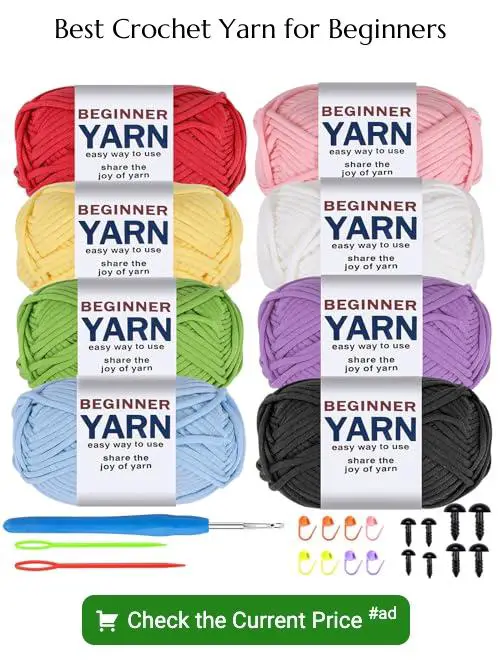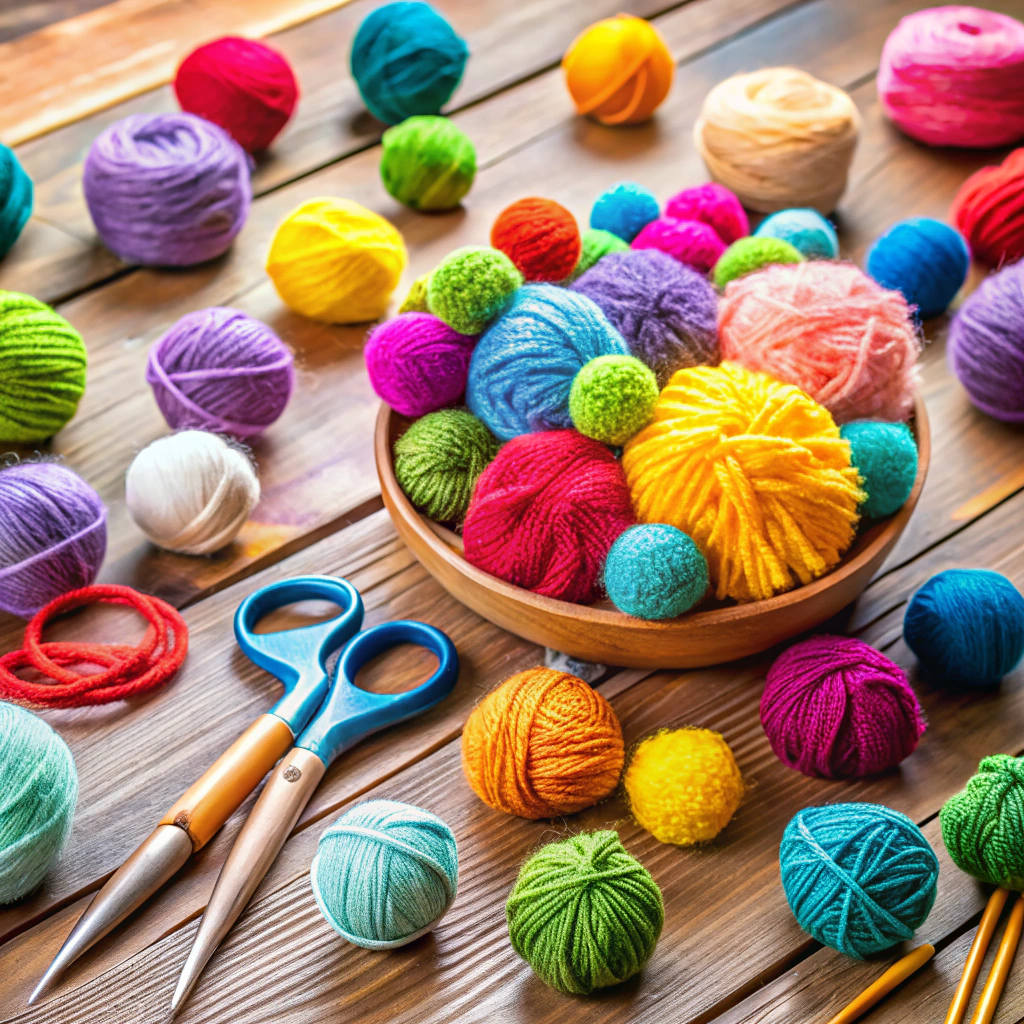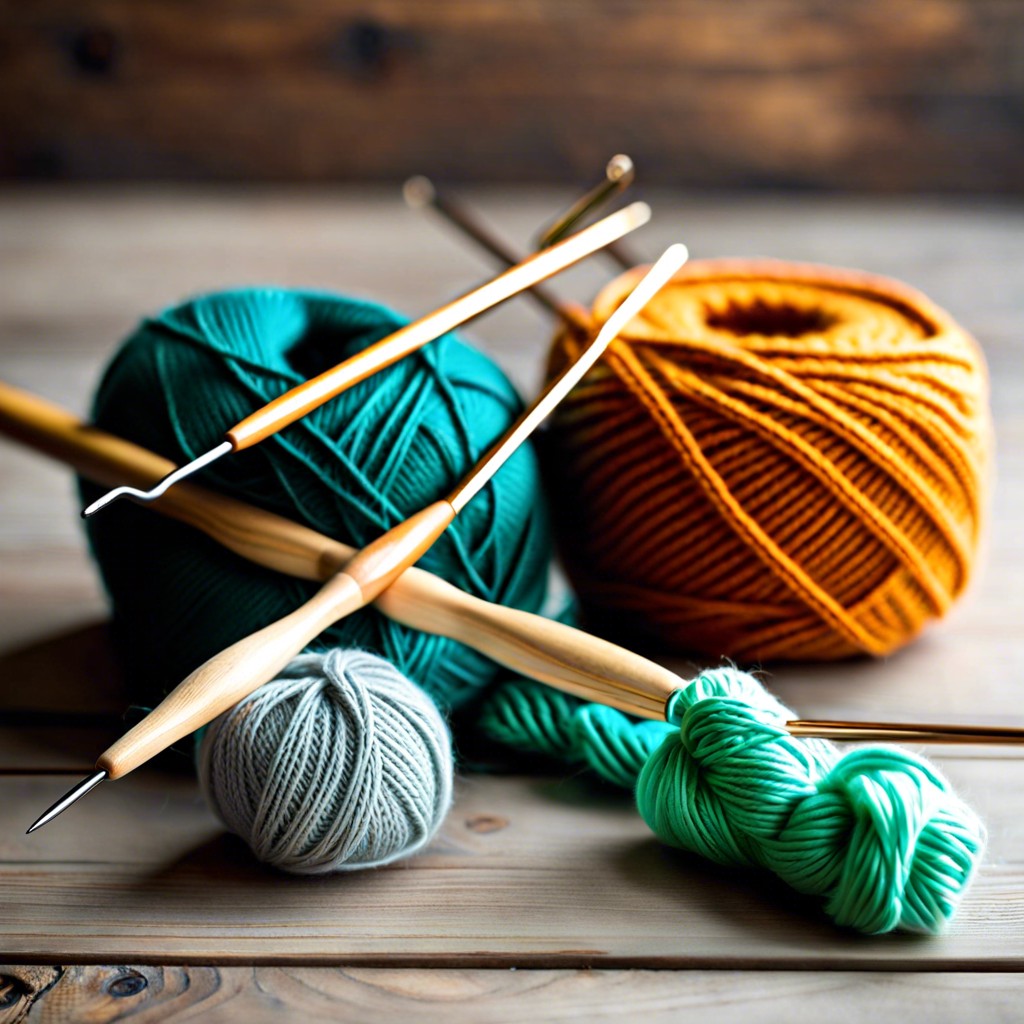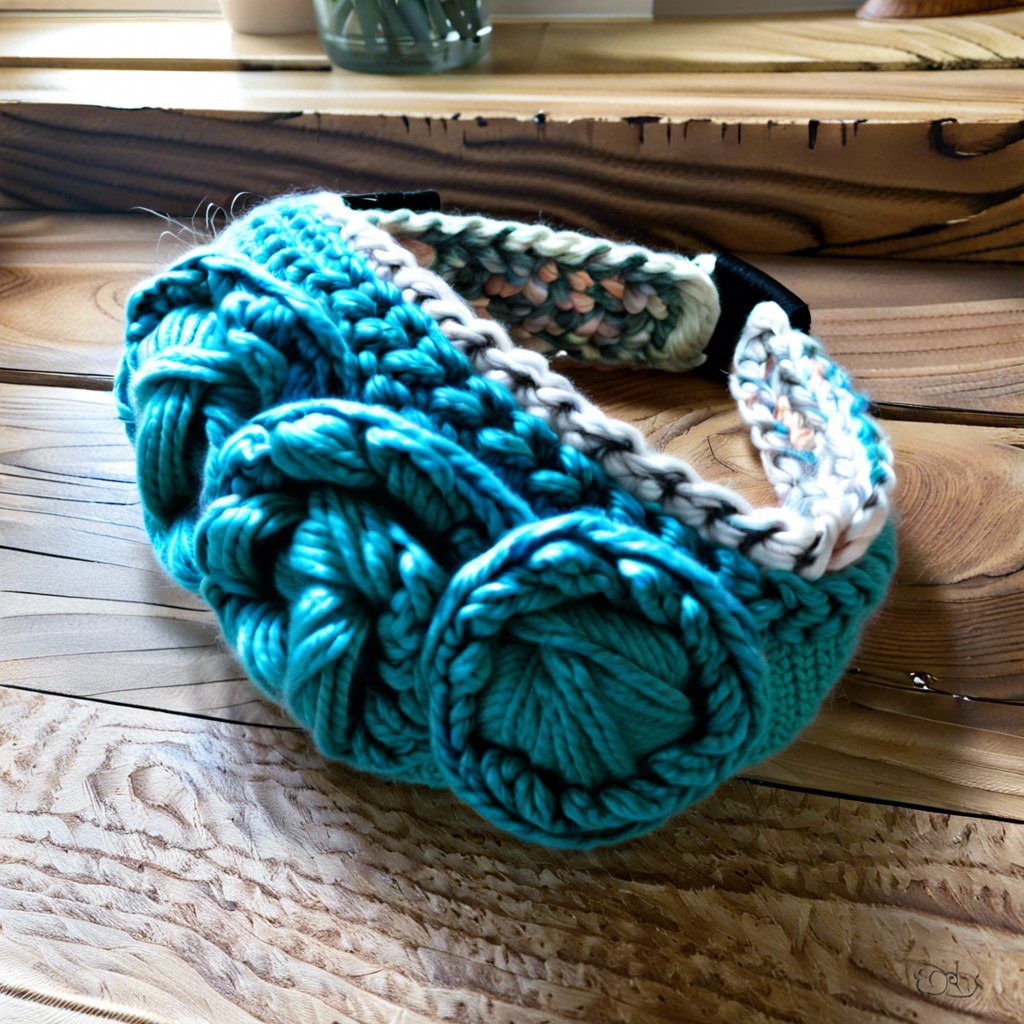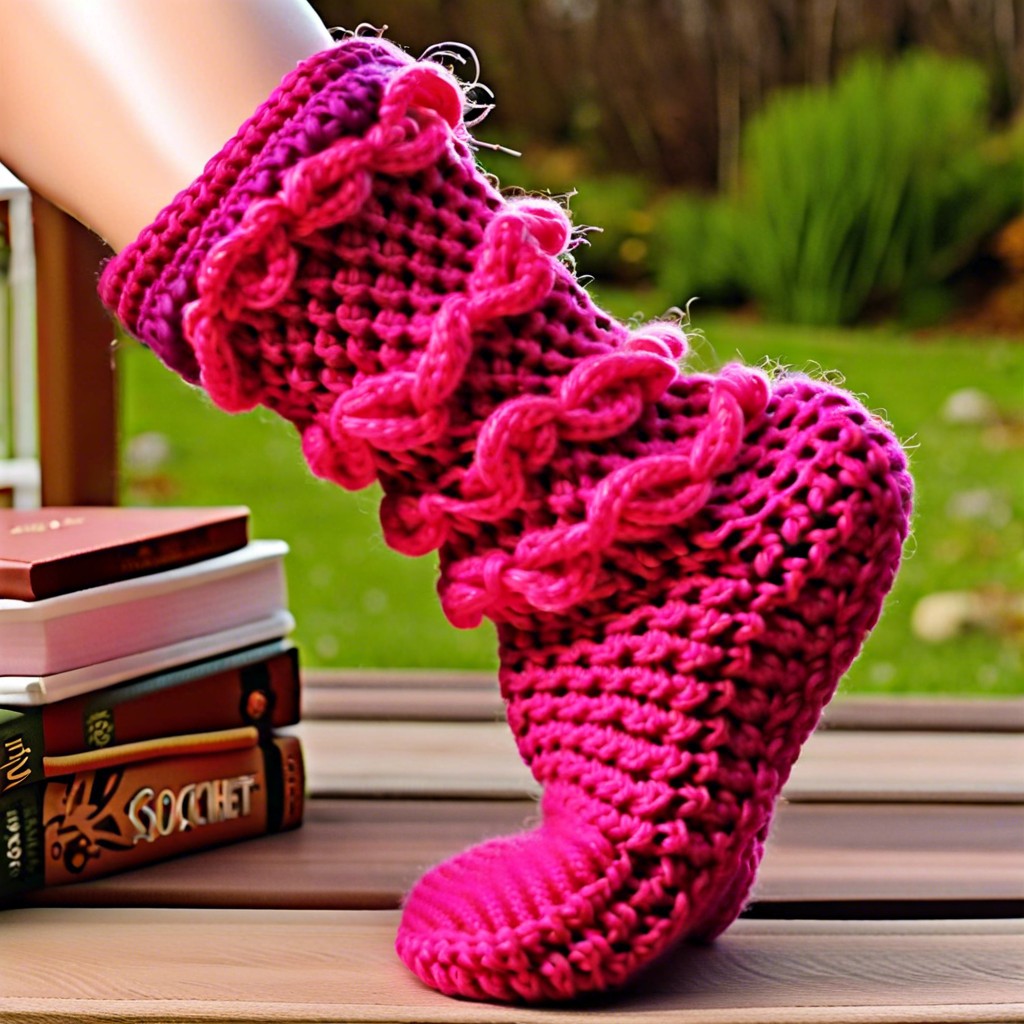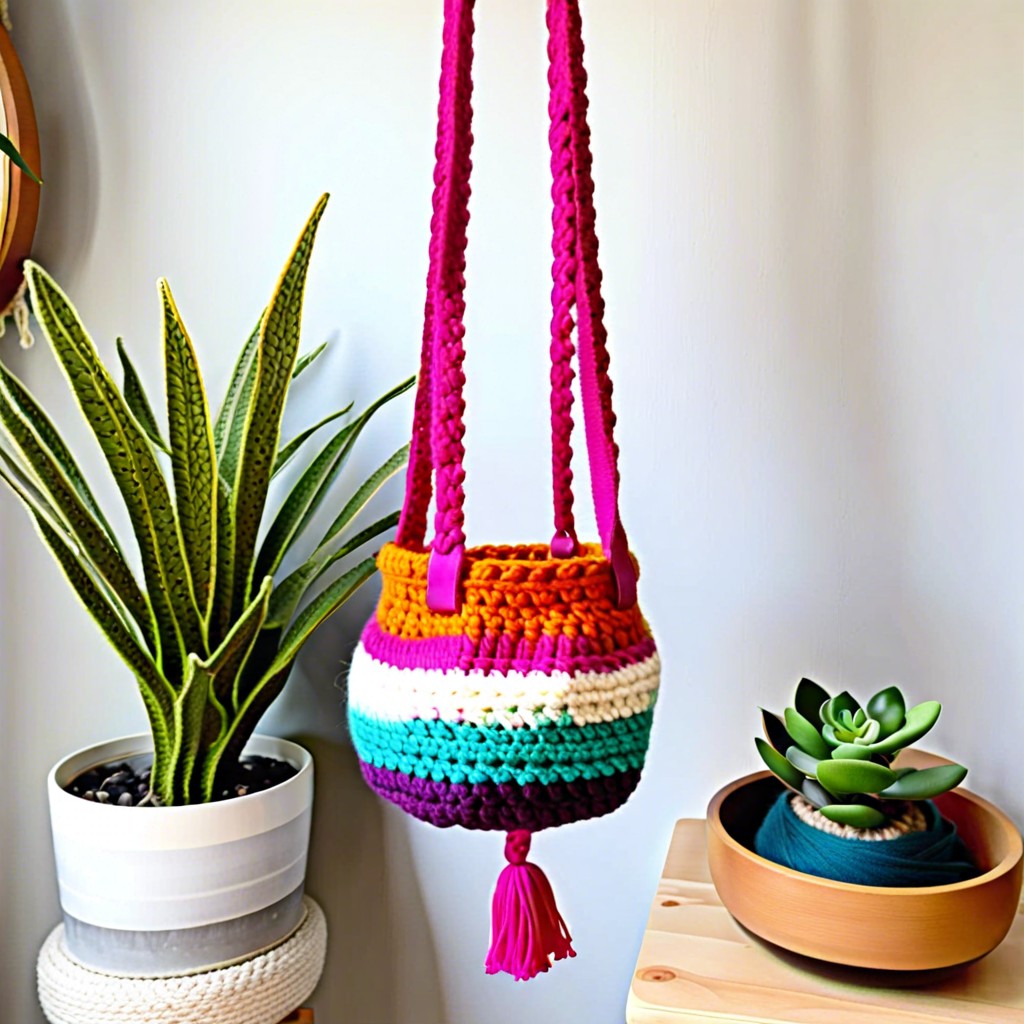Explore the diverse world of yarns to discover the best materials for your crochet projects.
Choosing the best yarn for crocheting largely depends on the project you’re undertaking. However, for most projects, medium-weight yarns, such as worsted weight or Aran, are often recommended due to their versatility and ease of handling. These yarns are ideal for beginners as they hold their shape well and are suitable for a wide range of crochet projects from blankets to wearables.
For more intricate or delicate projects, finer yarns like sport weight or fingering might be more suitable. On the other hand, bulky or super bulky yarns can be great for making cozy, chunky items.
In terms of material, cotton yarn is durable and easy to care for, making it a popular choice. Wool yarn is warm and elastic, excellent for winter garments. Synthetic yarns like acrylic and nylon are budget-friendly and come in a wide variety of colors.
Throughout this article, we’ll delve deeper into the characteristics of each type of yarn and how to choose the best one for your specific crochet project.
Key takeaways:
- Medium-weight yarns like worsted or Aran are versatile and recommended for most crochet projects
- Finer yarns like sport weight or fingering are suitable for intricate or delicate projects
- Cotton yarn is durable, wool yarn is warm, and synthetic yarns like acrylic and nylon are budget-friendly
- Consider yarn weight, fiber content, texture, care instructions, and color when selecting yarn
- Acrylic, cotton, and wool yarns are great choices for beginners
Understanding the Best Yarn for Crocheting
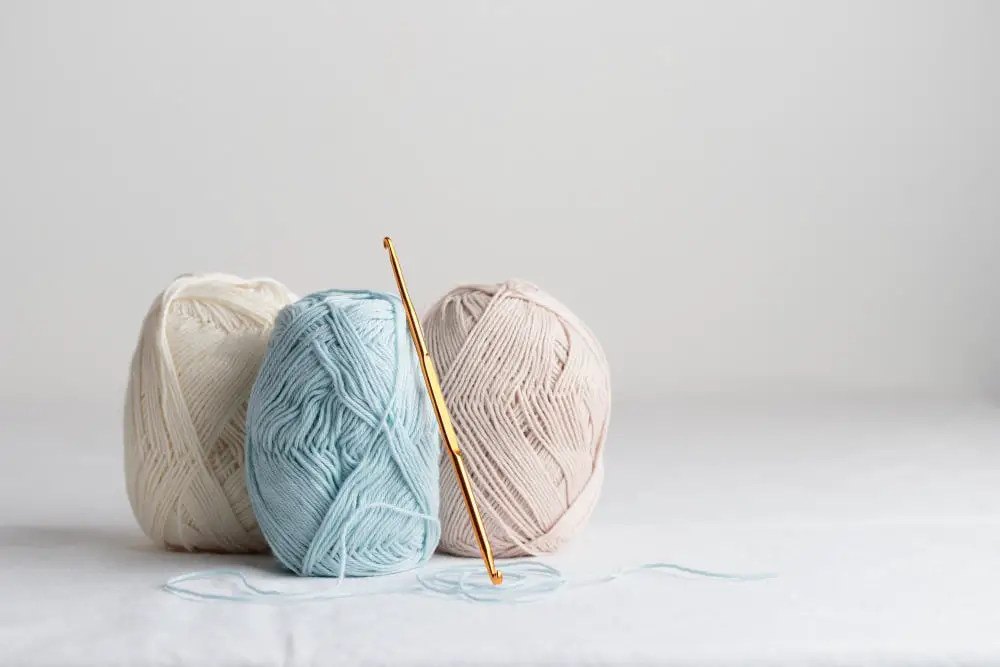
Selecting the perfect crochet yarn involves understanding its properties, which range from material to ply, weight, and even color.
Start by familiarizing yourself with various materials. Acrylic, cotton, wool, and blends have unique properties that can enhance your crochet project. Acrylic is typically lightweight and user-friendly, cotton offers a sturdy feel and vibrant colors, and wool provides warmth and structural integrity.
Comprehend yarn weight. In crochet terms, this refers to the yarn’s thickness – ranging from super fine, or lace weight, to jumbo. The weight can dramatically affect the drape and feel of your final product, so consider this in relation to your crochet project.
Appreciate the ‘ply’ aspect of yarn. It refers to how many strands of fiber are twisted together to create the yarn. A higher ply often results in smoother, rounder yarns, which can assist with stitch definition.
Don’t underestimate color. The shade can change the overall aesthetic of your project. It’s also essential to consider factors like colorfastness, which refers to the yarn’s resistance to running or fading.
Lastly, remember the care instructions. Different yarn fibers have various cares and washing specifications – some can be machine washed, others need to be hand-washed, while others may require dry cleaning.
In essence, there is no one-size-fits-all when it comes to choosing the best yarn for your crochet project. Get to know each type’s elements and experiment with what works best for you.
Yarn Weight and Its Impact On Crocheting
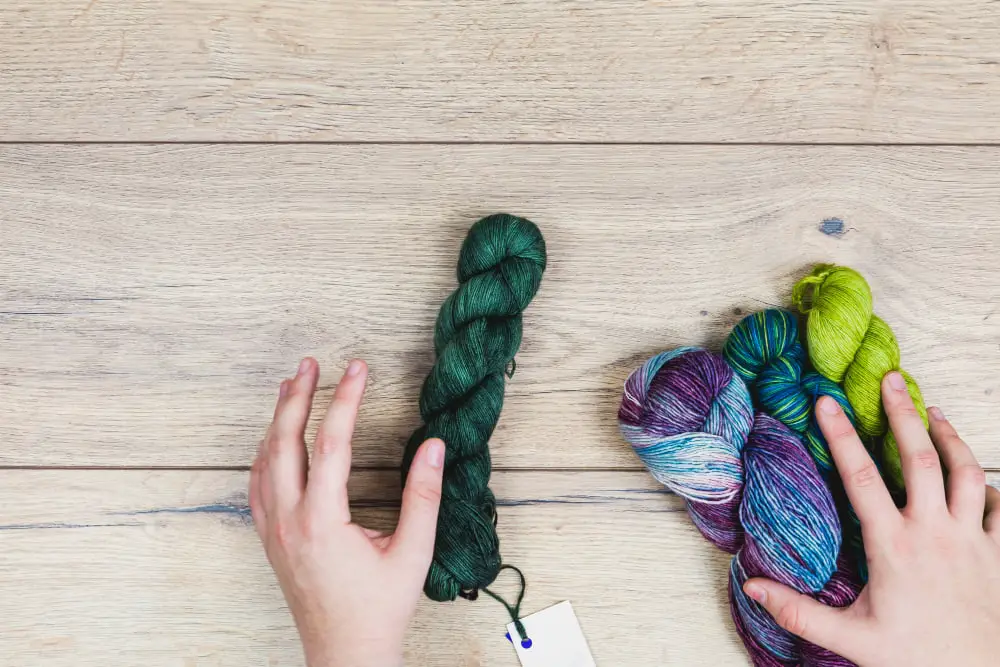
Understanding yarn weight is integral to the success of a crochet project.
Different yarn weights create a variety of fabric types. Finer yarns like lace or fingering weight produce delicate, lightweight fabrics perfect for intricate shawls or delicate baby items. Mid-range weights such as DK (Double Knit) or worsted create a more structured fabric suitable for scarves, hats, and blankets. Bulky and super bulky weights yield a chunky, warm fabric that works well for winter accessories or cozy afghans.
The weight of yarn also influences the crochet hook size and the stitch tension. Lighter yarns typically require smaller hooks and tighter tension to maintain the integrity of the fabric. Conversely, heavier yarns need larger hooks and a looser stitch tension to prevent the fabric from becoming overly stiff.
Another factor impacted by yarn weight is project time. Working with a finer yarn weight requires more stitches and more time to complete. On the other hand, a project using bulky yarn will be completed significantly faster due to the fewer stitches needed to fill the same amount of space.
In general, beginners should start with middle range yarn weights, as they offer a balance between detail and speed of completion while allowing a new crafter to build skill and confidence.
Knowing how to choose the right yarn weight for specific projects and understanding its impact on crocheting is vital in creating pieces that are both beautiful and functional.
Initial Yarn Recommendations for Beginners
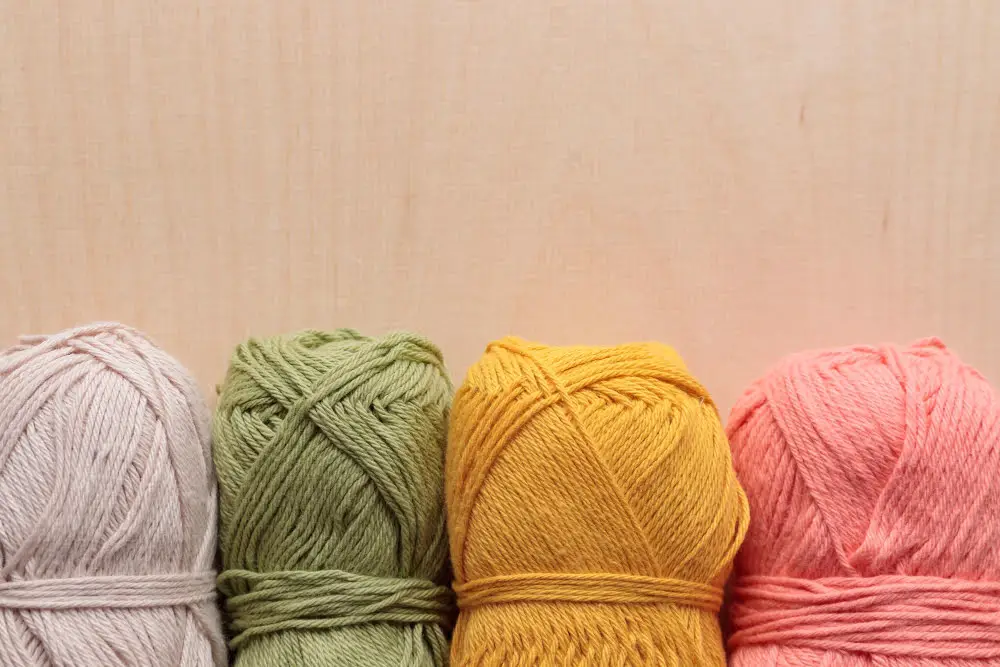
Starting with a medium-weight yarn, often labeled as worsted yarn, is an ideal choice for beginners. This type of yarn is commonly used and reacts well to the tension that beginners apply during crochet. It is also easier to see the stitches made in medium-weight yarns.
For materials, acrylic yarn is a budget-friendly, readily available option. It’s easy to care for, which makes it excellent for beginners experimenting.
Cotton yarn is another beginner-friendly selection. It’s known for its durability, it’s suitable for making practical items such as dishcloths or placemats. Cotton yarn is also loved for its smooth texture, which makes it easy to work with and offers excellent stitch definition.
Wool or wool blends are wonderful for beginners as they’re elastic, warm, and resilient. The texture of wool yarn helps keep the tension even, a quality that’s highly beneficial for beginners’ projects.
Keep in mind, the choice of yarn should also depend on the project you’re undertaking. If you’re attempting to make a wearable, considering the yarn’s washability is crucial. Additionally, understanding color theory can also be a determining factor for yarn selection. A good combination of colors can make patterns pop, especially when you’re aiming to highlight specific stitches in your piece.
Detailed Comparison: Acrylic Yarns Vs Cotton Yarns Vs Wool Yarns
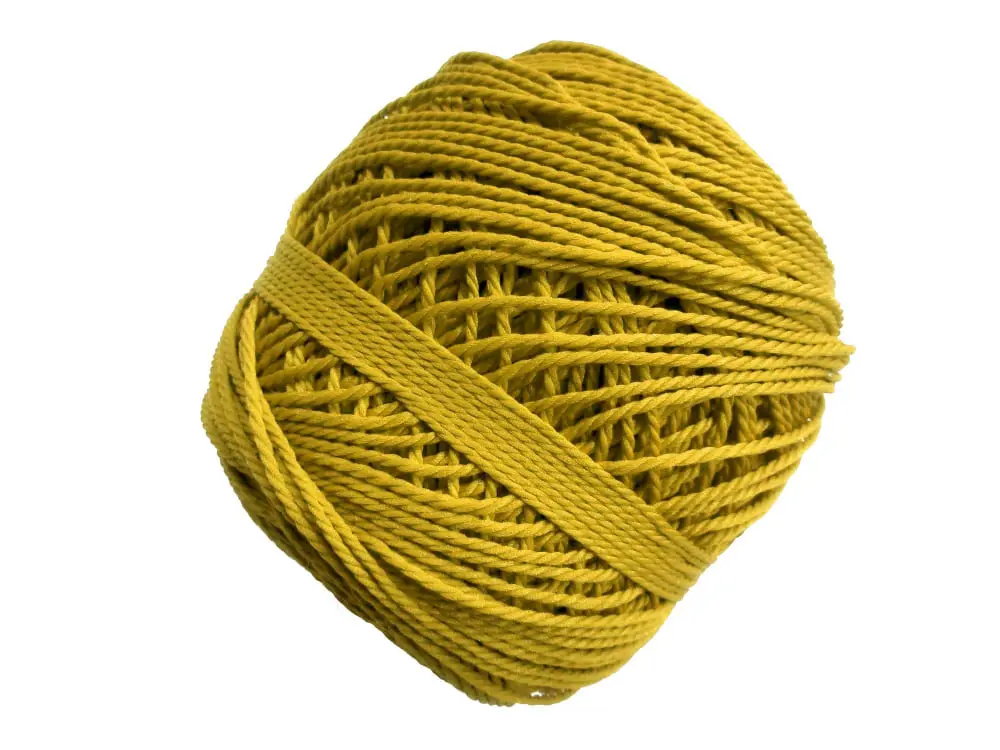
Acrylic yarns, being synthetic, are both cost-effective and easily maintained, making them a common choice for novices. These yarns are machine washable and tend not to shrink. Their wide range of colors and their resistance to moths also contribute to their appeal.
Cotton yarns bring a different set of qualities. They have a cool, lightweight feel which boosts their suitability for summer projects. Cotton yarn’s lack of elasticity aids stitch definition but might pose challenges in maintaining an even tension. These yarns can be machine washed, but keeping them away from high temperatures is advisable to avoid shrinkage.
Wool yarns, on the other hand, are hailed for their warmth and elasticity. They’re fantastic for making winter garments and accessories. Woolen fibers willingly accept dye, resulting in vibrant colorways. Nevertheless, they require more careful handling when washing, as exposure to heat or agitation can cause felting.
When considering these different types of yarns, it’s crucial to consider what is being crocheted. Different projects require various attributes in the yarn used. A wearable item might need a soft, machine-washable yarn, whilst a decorative item might need a yarn with great stitch definition and vibrant color.
Crucial Factors to Consider When Selecting Yarn for Crocheting
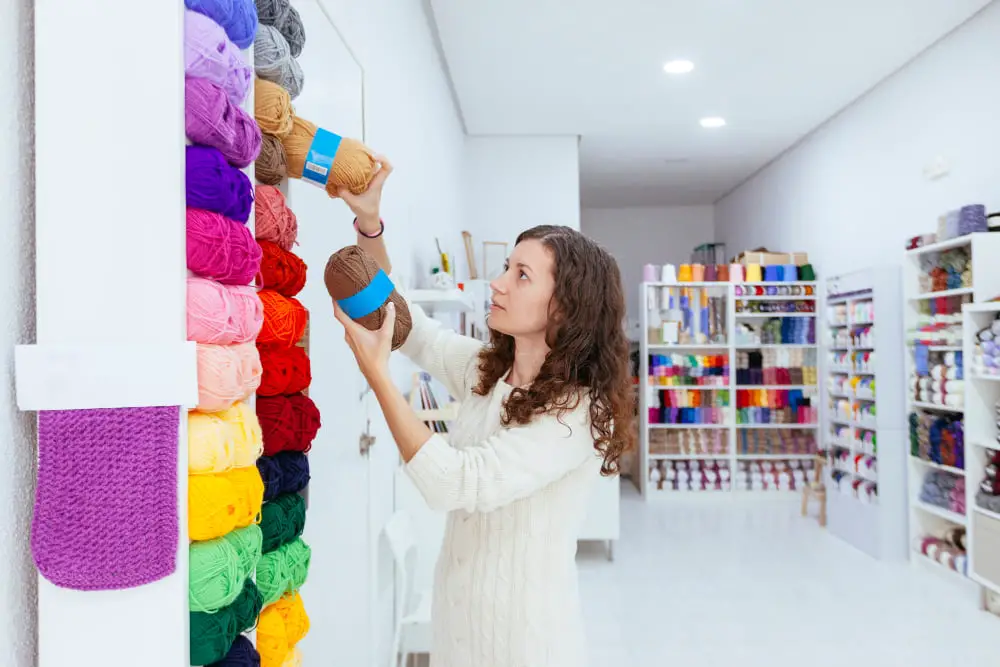
Selecting the perfect yarn for your crochet project involves considering several key factors.
First, it’s crucial to ponder upon the yarn’s thickness or weight. Different weights create dramatically different outcomes. Thicker yarns, such as bulky or chunky, make for quick, cozy projects, while thinner yarns like fingering or lace weight, lend themselves to delicate, intricate designs.
Second, consider the yarn’s fiber content. While cotton yarn is great for its durability and washability, wool offers warmth and elasticity, and acrylic is generally budget-friendly with a wide range of colors.
Third, take into account the yarn’s texture. Smoother yarns give clear stitch definition and are easy to work with, while textured yarns can create interesting visual effects.
Fourth, consider the care instructions. If your crochet project is to be frequently used and washed, opt for machine-washable yarns for convenience.
Lastly, the yarn’s color and dye lot are important. Ensure that all your yarn comes from the same dye lot to avoid subtle color discrepancies in your project. Also, decide whether you want a solid, variegated, or self-striping yarn, as each provides a uniquely different look.
Remember these key points while selecting yarn for your next crochet project to ensure a positive and satisfying experience.
Benefits and Features of Top 3 Yarns for Crocheting Beginners
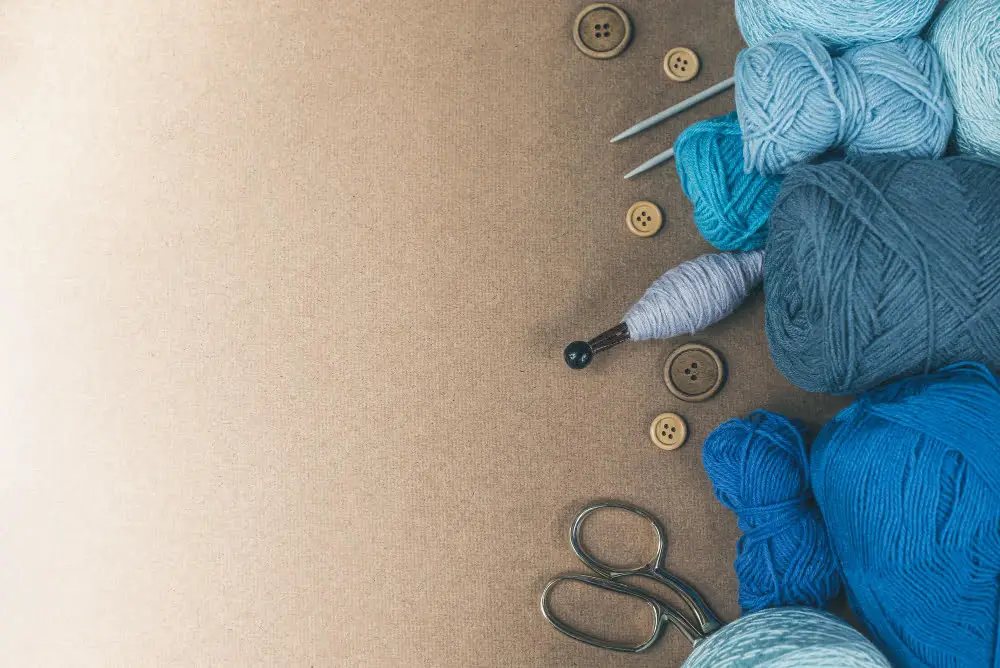
Starting with acrylic yarn, this synthetic material is durable, affordable, and great for slick crochet hooks as it easily slides off the hook, making it an excellent choice for beginners. It comes in a wide array of colors and weights. Being machine washable, it’s easy to care for, which makes it ideal for projects like dishcloths or children’s accessories.
Next, cotton yarn is another beginner-friendly pick. Known for its softness and strength, it provides a smooth crocheting experience. It displays stitch definition beautifully and is perfect for making wearables, especially for warmer climates. It is also machine washable, offering convenience and time-savings.
Lastly, wool yarn is a natural and warm fiber. It’s very forgiving, which means it can easily hide any minor mistakes. It’s ideal for creating projects that require a bit of elasticity like socks and sweaters. Wool yarn also comes in different weights and colors, giving you a plenty of options to choose from. However, it is important to note that most wool yarns need to be hand washed.
Principles of Choosing the Right Yarn Color for Your Crochet Project
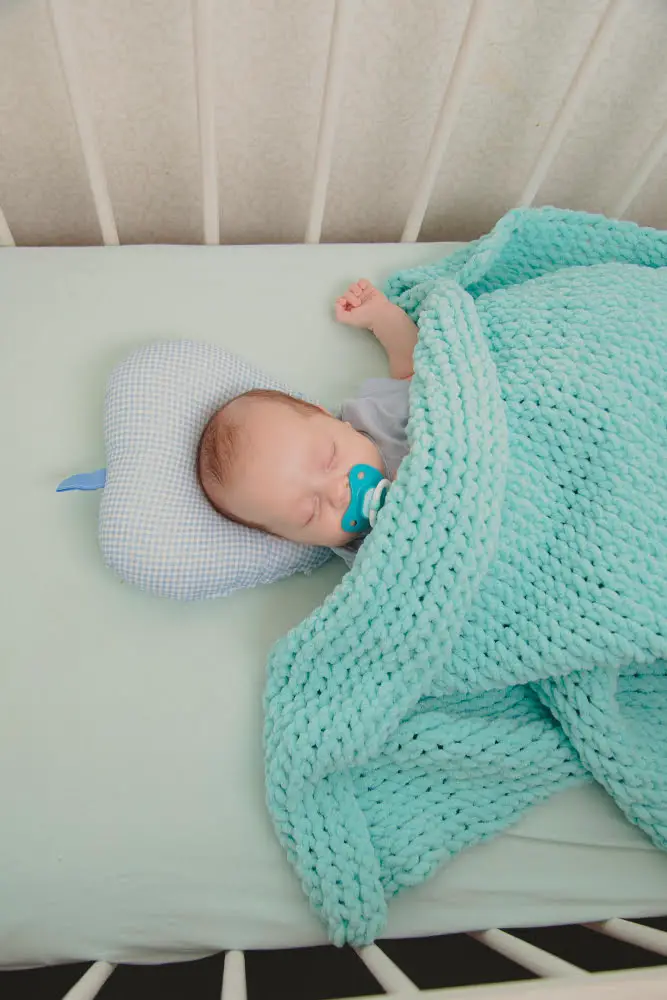
In the process of deciding on the ideal yarn color for your crochet project, there are several principles to keep in mind.
Consider your project’s purpose. If you’re working on a baby blanket, for example, softer, pastel shades might be suitable. For a statement piece like throws or cushion covers, you might opt for bold, vibrant colors.
Pay attention to color work techniques. If you’re planning to use multiple colors in your project, understand how different colors interact. Complementary colors provide a striking contrast, while analogous colors offer a harmonious gradient.
Account for light and color perception. Just as colors can change in different lighting conditions, your perception is unique, influenced by factors like age and the color of the surroundings. Try to view your yarn in natural light when making your selection.
Keep in mind that dye lots can vary. Two skeins of the same color but from different dye lots can have subtle differences. To avoid noticeable changes in color, check the dye lot number on the yarn label and buy enough yarn from the same lot for your project.
Think about color fastness. Some dyed yarns can fade over time or when washed. Opt for yarns labeled colorfast, or perform a simple test by soaking a swatch in warm soapy water to see if the color bleeds.
Lastly, trust your instincts. Your personal color preferences play a significant role in the creative process. Choose a color you love working with that also matches the project you have in mind.
Highlighting the Role of Stitch Definition in Yarn Selection
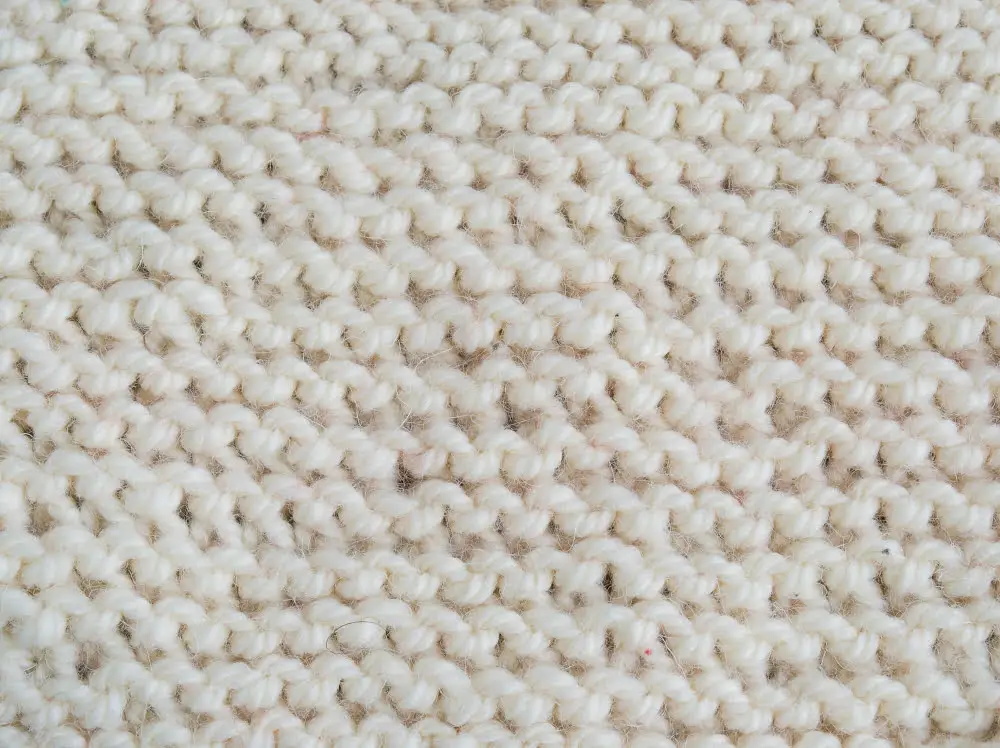
Stitch definition is crucial when choosing yarn because it impacts the visibility of your stitches.
A tightly spun yarn, for example, showcases each stitch clearly due to its smooth texture. This type of yarn is fit for intricate and complex crochet patterns that require a high stitch definition to emphasize detail and make the patterns stand out.
On the other hand, a loosely spun or fluffy yarn does not offer as high stitch definition. Instead, it provides a softer, subtler look since the stitches blend together more. This style is preferable for more straightforward, less detailed projects like blankets and scarfs, where the focus isn’t necessarily on the stitch intricacy, but rather the overall aesthetic and texture.
Similarly, variegated yarns, which change colors along their length, can obscure stitch details. For instance, if the color variation is too drastic, it might mask any elaborate patterns within your work.
In contrast, solid or semi-solid colors can enhance stitch definition because they allow each stitch to pop visually.
Remember, it’s essential to consider the project you’re working on and the effect you’re trying to achieve. You may decide to experiment with different yarn types, observing how they influence the stitch definition, before finalizing your choice.
Pros and Cons of Machine Washable Yarns
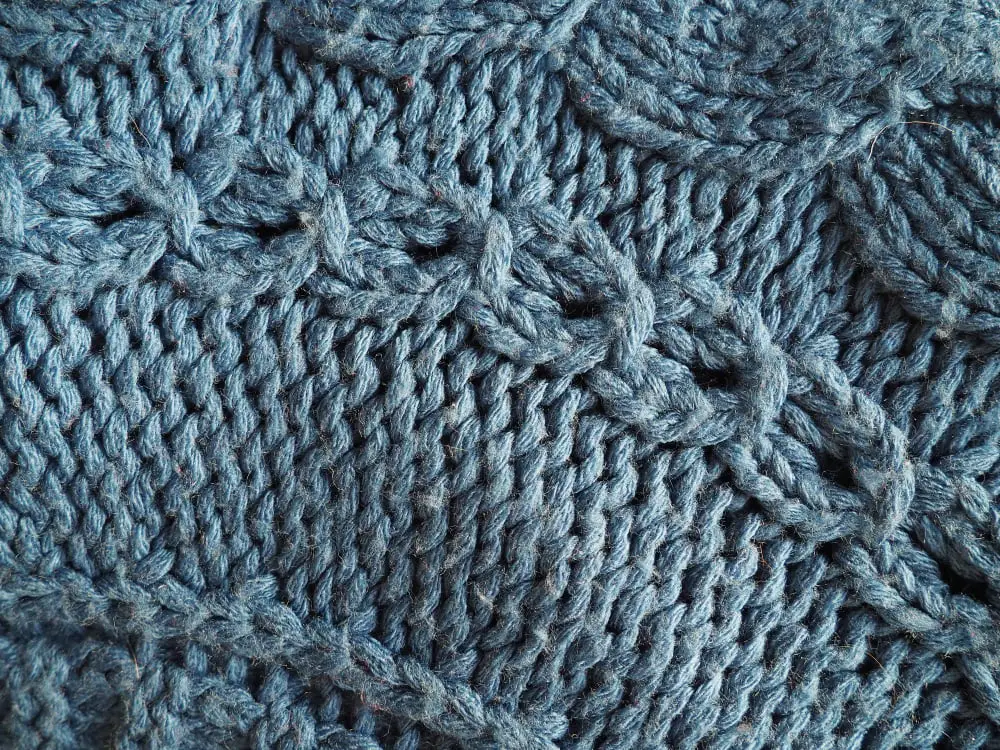
Machine washable yarns, often crafted from materials like acrylic and some wools, offer a convenient choice for busy crafters. However, like all things, they have both their advantages and disadvantages.
Starting with the pros, they can be a time-saver. With their ability to withstand a machine wash, items made from this yarn exclude the need for hand washing, making them practical for daily use items like dishcloths or children’s wear.
Secondly, they tend to be durable. Many machine washable yarns are resistant to pilling and wear, maintaining their look and feel even after numerous washes. This makes them an excellent pick for frequently used or worn items, such as scarves or blankets.
Moreover, machine washable yarns are typically colorfast, which means they retain their color well even after washing. This is particularly beneficial if you’re working with vibrant colors or intricate colorwork patterns in your crochet project.
On the flip side, these yarns also have their cons. One downside is that they can lack the luxurious feel of some natural fibers. While they are often soft to the touch, they may not provide the same level of warmth, texture, or breathability as non-machine-washable options such as cashmere or alpaca.
Additionally, some machine washable yarns have a tendency to lose their shape over time, especially if regularly subjected to the rigors of a machine wash. While blocking can often restore an item’s shape, this is an extra step that some may find inconvenient.
Lastly, certain machine washable yarns are less eco-friendly than their natural counterparts. For instance, acrylic yarns, which are typically machine washable, are made from synthetic materials and their production and disposal can contribute to environmental pollution.
Educating yourself about the qualities of various yarn types can make a huge difference in the durability and care of your finished crochet pieces. Thus, when considering whether machine washable yarns are for you, be sure to consider both their practical advantages and their potential drawbacks.
Choosing an Appropriate Crochet Hook Size According to Your Yarn
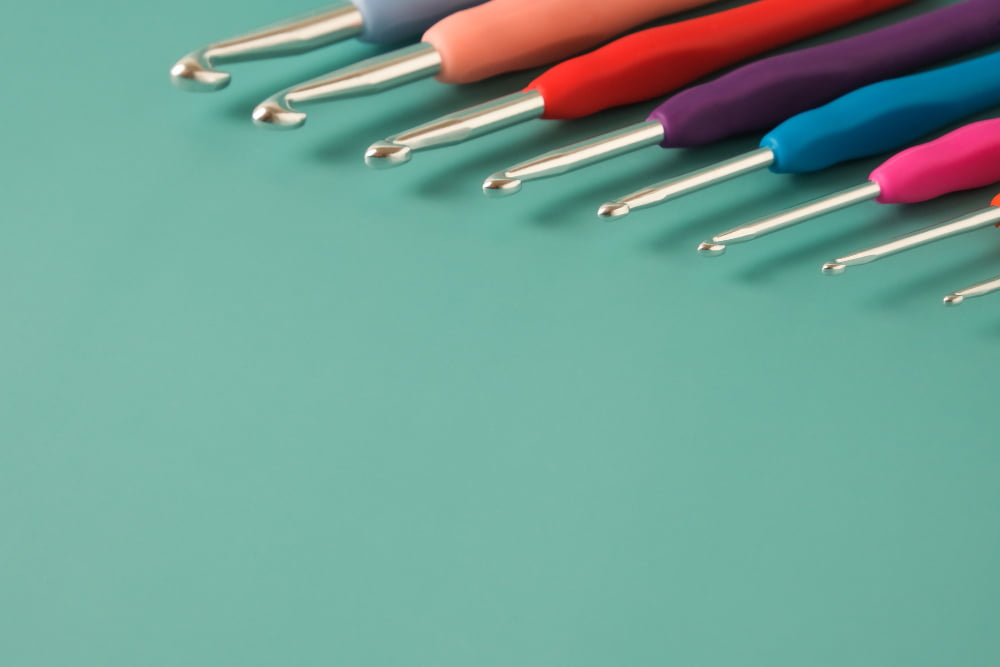
When selecting a crochet hook for your yarn, first, refer to the yarn label. This generally mentions the recommended hook size. Following these recommendations ensures your final project falls close to the expected size and appearance.
For thin or lace-weight yarns, it is essential to use smaller hooks, typically between sizes 2.25mm and 3.5mm. These provide the tight stitches necessary for delicate projects.
Worsted weight yarns, being medium thickness, work best with medium-size hooks. You might consider a hook size from 5.5mm to 6.5mm for optimal results.
Bulky to super bulky yarns require larger hooks, ranging from 9mm to 15mm. Using larger hooks with these yarn weights produces looser stitches suitable for warm, thick projects like winter scarves or afghans.
Remember, hook selection can also depend on the desired effect. A hook smaller than the recommended size yields tighter stitches, useful for projects requiring sturdiness, like baskets. In contrast, a larger-than-recommended hook results in airy, looser stitches, perfect for lightweight shawls or blankets.
Lastly, practice swatching – crocheting a small square – to gauge whether the chosen hook size gives the desired fabric drape and stitch definition. Don’t be afraid to adjust the hook size in search of the perfect fit for your project!
Detailed Overview of Common Beginner Yarn Queries

Many beginners encounter some common queries when selecting their first yarn for crocheting. Understanding these concerns, and how to address them, can make the selection process much more efficient.
A frequently asked question revolves around identifying the correct yarn weight. Yarn weight, simply put, is the thickness of the yarn strand. This can range from lace (very thin) to jumbo (very thick), with different weights suitable for different projects.
One may also wonder about the best kind of material for yarn. This largely depends on the intended use for the crochet project. For example, cotton yarn is durable and great for dishcloths, while acrylic yarn is versatile and easy to work with for a range projects, making it a popular choice for beginners.
Another common query is about yarns that are easy to take care of. Generally, acrylic and cotton yarns are machine washable and do not require special care, unlike some types of wool yarn, which can shrink in a regular wash.
Finally, a great question new crocheters often ask is regarding color selection. It’s actually less about finding the “correct” color and more about choosing a color that makes it easy to see your stitches. For those just starting out, solid, light colors are usually the easiest to work with.
These insights should help novices navigate their way around yarn selection for their inaugural crochet endeavors. Understanding these factors can help in making a more informed and confident choice.
Best Online Platforms for Procuring High-Quality Yarn

Understanding the quality of yarn online can be tricky. Therefore, it’s crucial to rely on reputable platforms specializing in yarn and crafting supplies. These platforms often have customer reviews, detailed product descriptions, and high-quality product images to assist in making an informed decision.
– Amazon is a vast marketplace with multiple sellers and brands that offer a wide range of yarns. They have user ratings and reviews that can help determine the quality.
– LoveCrafts is dedicated to knitting and crocheting enthusiasts. They boast an extensive collection of yarns from various brands and offer international shipping.
– Etsy is perfect for those looking for hand-dyed or artisanal yarns. Individual crafters and small businesses sell their uniquely crafted or curated yarns here.
– Jimmy Beans Wool is a popular online yarn store that offers a great variety of designer yarns. They also provide yarn samples for a small fee.
– Wool Warehouse has a comprehensive range of yarns and often offer discounted prices. They stock both big-name brands and independent suppliers.
Remember, it’s always worth investing time in reading customer feedback, studying the product details, and comparing prices on these sites. It will help ensure you get the most suitable yarn for your crocheting project.
FAQ
What is the easiest yarn to learn to crochet with?
The easiest yarn for beginners to learn crochet with is an acrylic type due to its affordability, versatility, and gentleness on the hands.
Is cotton or acrylic yarn better for crochet?
Acrylic yarn is typically preferred for crochet items such as blankets and scarves due to its affordability, availability, and sturdiness, while cotton yarn, which is soft and breathable, is commonly used for lighter, delicate projects.
Is thick or thin yarn better for crochet?
Thick yarn is typically better for crochet, especially for beginners, due to its quicker project completion times and easier handling.
How does the type of yarn impact the overall durability of crochet projects?
The type of yarn significantly influences the durability of crochet projects; thicker yarns and those made from synthetic materials generally create more hard-wearing and long-lasting creations than thin, natural fiber yarns.
For crochet dishcloths and towels, which type of yarn is most recommended?
Cotton yarn is the most recommended type for crocheting dishcloths and towels due to its durability, absorbency, and ability to withstand high heat.
What are the significant differences between synthetic and natural yarns in crochet work?
Natural yarns, sourced from plant or animal fibers, have inherent warmth, breathability, and durability compared to synthetic yarns, which are chemically composed and offer high elasticity, color retention, and stain resistance.
